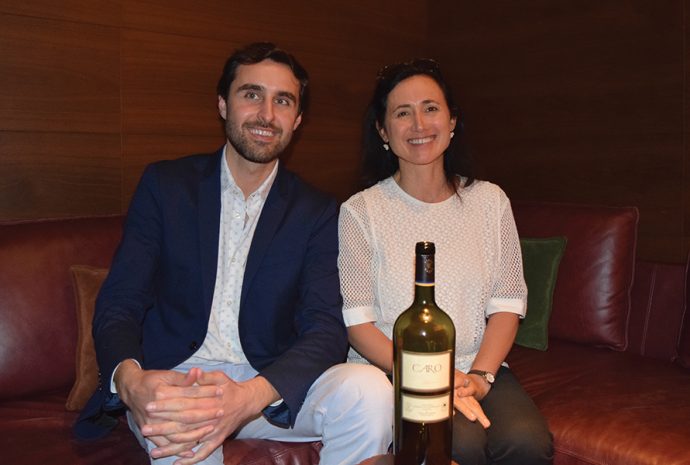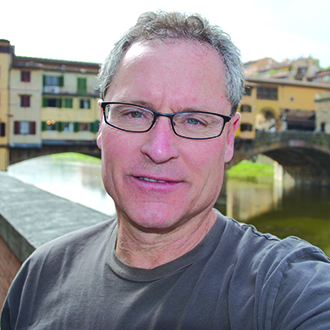Château Lafite Rothschild is surely one of a few family wine names that conjures images of excellence in anyone’s mind.
The earliest references to the family’s wine goes back to the early 13th century. Their vintages have been collected and served through the centuries by kings and queens, czars and American presidents, notably Thomas Jefferson. I can remember knowing the name “Lafite” before I knew anything of wine.
In 1988, the Rothschilds began a collaboration with Los Vascos winery in Chile. The dreaded phylloxera, a soil-borne louse that will suck the life out of grapevine roots, had decimated vineyards around the world, forcing big name wineries like the Rothschilds’ to diversify and look elsewhere for appropriate vineyard sites. Some set their sights on South America, which already had a wine culture dating back to the Spanish conquistadors. This put Chile and Argentina on the world’s wine map.
In Chile, the Rothschilds’ mission was to find, focus and finance a quality producer and bring South American wines to a much higher plane. The wines sell for a fraction of the cost of a Bordeaux first-growth wine, but the vineyard methods and the oenological knowledge and direction is nothing less than first-rate, guided by Olivier Trégoat, the technical director for the Rothschilds’ estates outside of Bordeaux, France.
In 1999, the Rothschilds looked to the high altitude vineyards of Mendoza, Argentina, and found Bodega Catena Zapata winery met their prerequisite of producing high-quality wines with ambition, infrastructure and room to improve. They entered into an agreement with the Catena family, which had been making wines for three generations, to help advise, finance and support all aspects of the partnership. Domaines Barons de Rothschild (Lafite) and the Catena family decided on a blend of the names for the wine. “Catena” and “Rothschild” became Bodegas CARO wines. They searched for a winemaker with big credentials and bigger potential and recruited Fernando Buscema, a fifth generation winemaker from Mendoza. Fernando was already fully immersed, having earned an oenology degree in Argentina and a master’s degree from the University of California, Davis.
I met Laura Catena and Fernando recently over an exceptional dining experience at Zuma, a Japanese restaurant in Manhattan. Laura is Catena owner Nicolás’ daughter and an emergency room physician living with her family in San Francisco. Over lunch, she told me the Catena family was a longtime farming family dedicated to wine production.
“We were absolutely giddy when the Rothschild family first approached us. Our wines were well-known to be delicious and impressive in Argentina, but this would take us to another level. Our mission is to make the most elegant wine from Argentina.”
All of the grapes grown for CARO wines are hand-harvested and hand-sorted before destemming and crushing. This ensures no “off” grapes get into the mix and that the tannic stems are removed, creating a softer and more delicate wine. CARO produces Aruma, a single varietal Malbec wine, but its other wines are blends. By melding two grapes, the Malbec brings power, exuberance and fruitiness to the portfolio, while the Cabernet Sauvignon provides structure and elegance.
We tasted the 2016 Aruma, which was a refined and elegant version of Malbec showing dark cherry, soft spice and a silkiness to entertain the palate. Judicious use of Bordeaux barrels enhanced all these wines, but Fernando told me, “We don’t want the oak to be the star. We want the fruit to speak for itself. The oak amplifies the flavors of the grapes.”
Our next wine was the 2015 Amancaya blend of 85 percent Malbec and 15 percent Cabernet. It had lush, lovely notes with rich cherry and big, delightful aromatics that kept the glass close and under the nose even when not sipping. We then tasted two of the vineyard’s signature wines, CARO, from two different vintages. The blend percentages are different each year depending on the specific weather conditions and the emphasis each wine will contribute to the final product. We first tasted the 2014 CARP, which was dark and dense, with black cherry notes and hints of coffee and chocolate. The 2007 vintage showed a dark and brooding cherry tempered by licorice and vanilla. At the one-decade mark, the 2007 is still very youthful with lots of time left.
All of these wines are worth seeking out or even special ordering. Baron Eric de Rothschild called this venture “an association between two cultures, two families and two noble grapes.” These wines are affordable and significantly over-deliver. For your next event, think CARO. Your guests will be impressed.
Write me at doug@dougpaulding.com.


